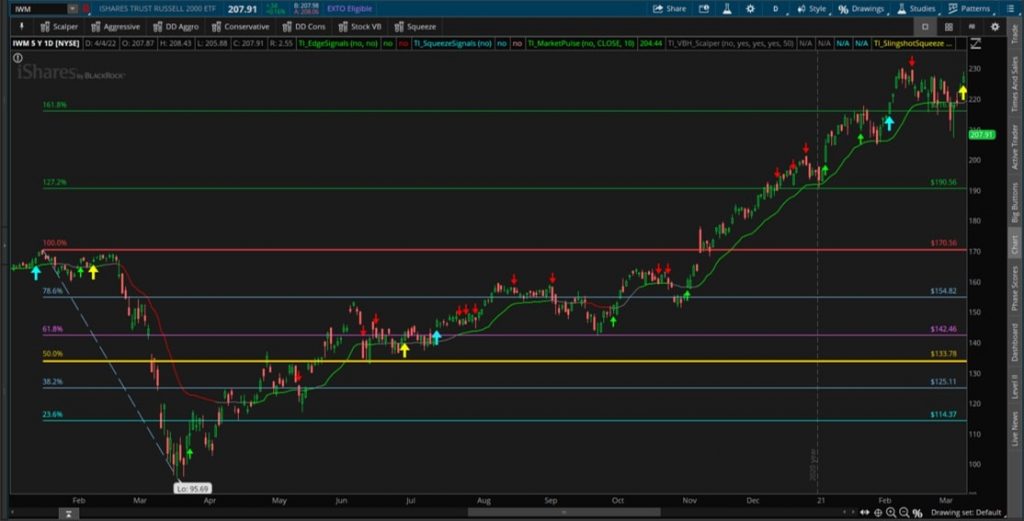Fibonacci Trading

Introduction
Welcome to the first part in a series of videos, designed to show you how you can use Fibonacci to improve your overall trading strategy.
My goal throughout this series is to build a solid foundational base, so you understand both the "how", along with the "why".
We'll start with exploring the origins of the popular Fibonacci Sequence, and connect the dots to how the sequence is used in trading. Much of this first part focuses on the 'theoretical' knowledge, with the goal of increasing your confidence in its baseline logic.
Once you have a firm grasp on these concepts, we will move on to practical application, including
- Learning how to use different Fibonacci Tools
- How to build your own Fibonacci cluster zoons
- How to use Fibonacci ratios to time your entries and exits for maximum profitability
By the end of this series, you should have a very clear understanding of how to use popular Fibonacci tools in your trading (and more importantly, WHEN to use them!).
Fibonacci Sequence: The Rabbit Riddle
Leonardo Bonacci was an Italian mathematician who lived in the 12th century. He is best known for his discovery of the Fibonacci sequence, a series of numbers that have many applications in mathematics and nature (and trading!).
The sequence originated from a simple math riddle:
Given optimal conditions, how many pairs of rabbits can be produced from a single pair of rabbits in one year?
There were a few caveats:
- You started with one male and one female rabbit
- Female rabbits always give birth to pairs
- Each pair consists of one male and one female
- Rabbits can't reproduce until they are at least 1 month old
Let's take a look to see how this riddle plays out, in the first five months.
In Month 1, we have just the 1 pair of rabbits that we start with:

In Month 2, we have the original pair of rabbits, along with their first off-spring, for a total of 2 pairs of rabbits.

In Month 3, we have the original pair of rabbits, their latest offspring, and the offspring from Month 2. This leads us to have a total of 3 pairs of rabbits.

In Month 4, we have the original pair of rabbits, another set of offspring, the offspring from Month 2, the offspring from Month 3, and the offspring from Month 2's first set of offspring. This leads us to have a total of 5 pairs of rabbits.

In Month 5, we have the original pair of rabbits, another set of offspring, the offspring from Month 2, the offspring from Month 3, the offspring from Month 4, the offspring from Month 2's second set of offspring, the offspring from Month 2's first set of offspring, and the Month 3's first set of offspring. This leads us to have a total of 8 pairs of rabbits.

The sequence should begin to look familiar - the Fibonacci Sequence!
In the Fibonacci sequence, each number is the sum of the previous two numbers.
For example, the first ten numbers in the sequence are 0, 1, 1, 2, 3, 5, 8, 13, 21, and 34.
The Fibonacci sequence has many interesting properties, including the fact that the ratio of consecutive numbers in the sequence converges to a value called the golden ratio, which we will discuss in this section.
Fibonacci's work had a significant impact on mathematics, and his Fibonacci sequence is still studied by mathematicians today.
Patterns and Ratios in Fibonacci Sequence
Now that we know a little bit about the Fibonacci sequence, let's take a look at how it can be applied to trading.
There are seven main Fibonacci ratios that are used in trading: 0.236, 0.382, 0.500, 0.618, 0.786, 1.272, and 1.618

These ratios are derived from the Fibonacci sequence:
1, 1, 2, 3, 5, 8, 13, 21, 34, 55, 89, 144, 233, 377, 610, 987...
- 0.236 – Number divided by 3 numbers after current number in sequence (example: 89/377)
- 0.382 – Number divided by 2 numbers after current number in sequence (example: 89/233)
- 0.500 – Commonly acts as support/resistance
- 0.618 – Number divided by next number in sequence (example: 89/144) and inverse of Golden Ratio (1/1.618)
- 0.786 – Inverse of 1.272 (1/1.2727)
- 1.272 – Square root of golden ratio (√1.618)
- 1.618 – Golden Ratio: Number divided by previous number (example: 233/144)
These ratios can be applied to trading in a few different ways.
In Part 2, I'll show you how you can use these ratios in the Fibonacci Retracements tool to quickly, and reliably, find support and resistance levels.
